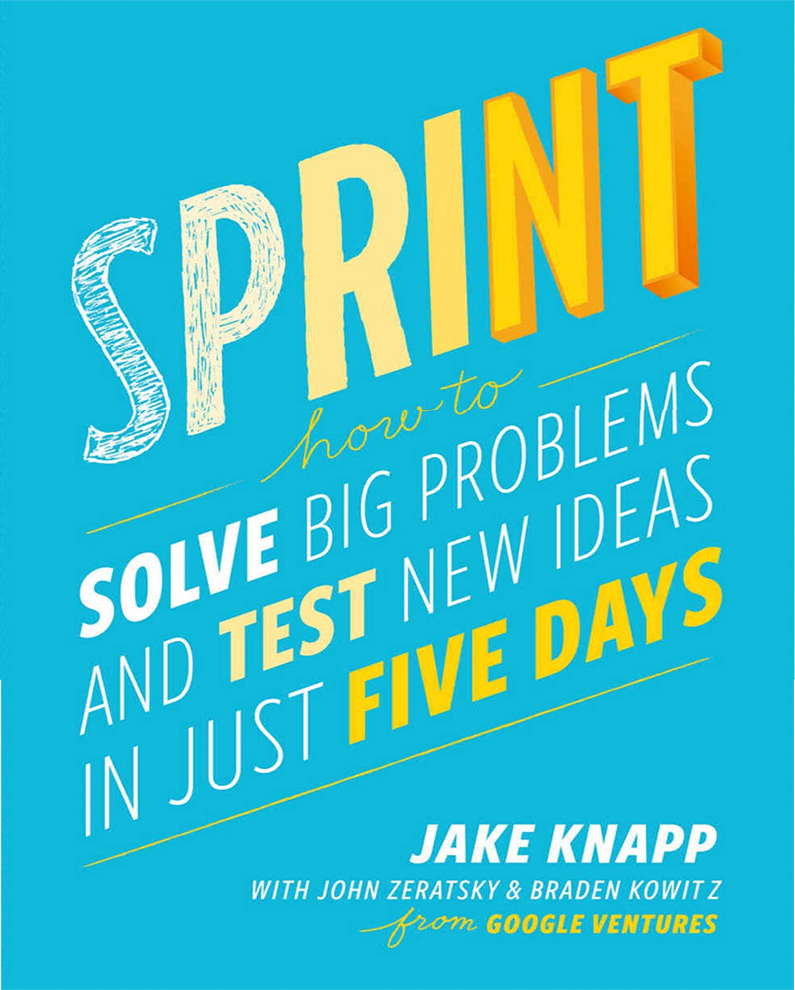Book Review: Sprint: How to Solve Big Problems and Test New Ideas in Just Five Days, by Jake Knapp, John Zeratsky, and Braden Kowitz

In the book Sprint: How to Solve Big Problems and Test New Ideas in Just Five Days by Jake Knapp, John Zeratsky, and Braden Kowitz - Google Venturers - we learn the importance of speed, when it comes to design-thinking, prototyping, and testing of the high-stake initiatives.
Following the design sprint process, companies can use their non-disruptive, 5-day sprint to tackle some of the most burning organization’s problems in meaningful ways by focusing only on key initiatives. The book narrates intense and entertaining stories of Blue Bottles Coffee and future hotel “concierge-robot,” among others.
The sprint process starts by “setting the stage,” which involves selecting the right challenge and the right team and then making the time and space for it. The ideal team includes a Decider, a finance expert and others such as a marketing, customer, tech, and design expert.
In this 5-day process, each day is structured and meant to solve different pieces of the puzzle. Monday is reserved for structured discussion. It is the day to agree on the long-term goal, map the challenge, then ask organizational experts to share what they already know. At the end of the day, the team needs to pick a manageable challenge that can be solved within a week. On Tuesday, the team comes up with solutions by sketching out concepts while emphasizing critical thinking over design. On Wednesday, all solutions are stacked up and the team decides which one has the best chance of achieving a long-term goal. Sketches are organized in a storyboard format that is then prototyped on Thursday. On Friday, built prototypes are tested with real customers through interviews and interactions. Interviews give the team feedback if there is a gap between the vision and the customer.
In conclusion, Sprint gives superpowers to organizations and teams. It allows them to fast-forward into the future to see what kind of impact their product/future product will have on targeted customers before making any expensive commitments.